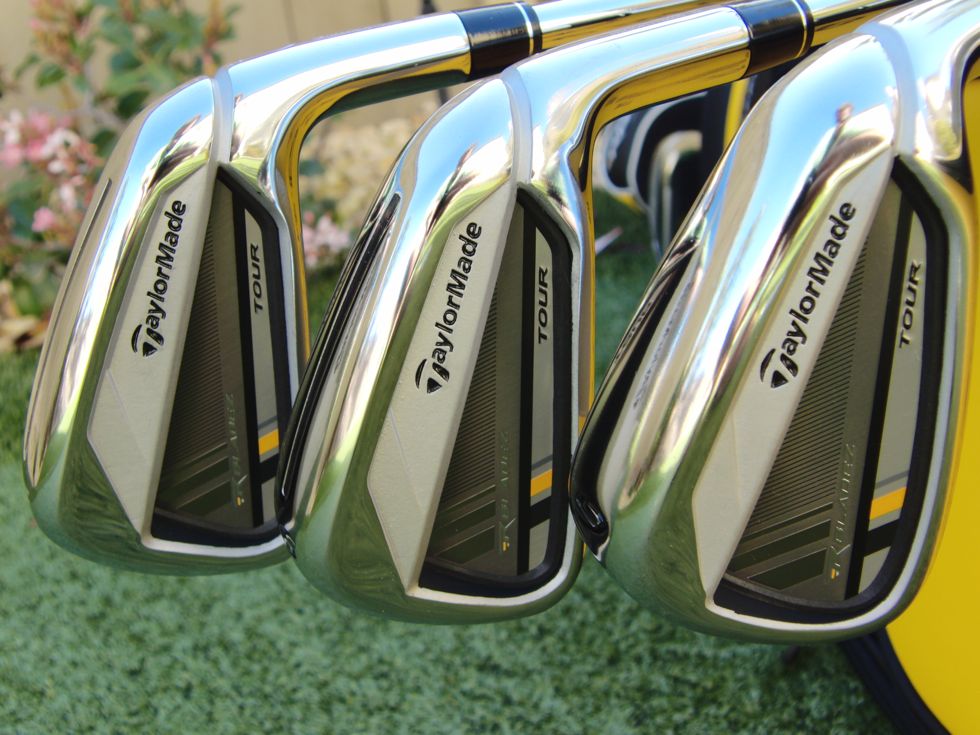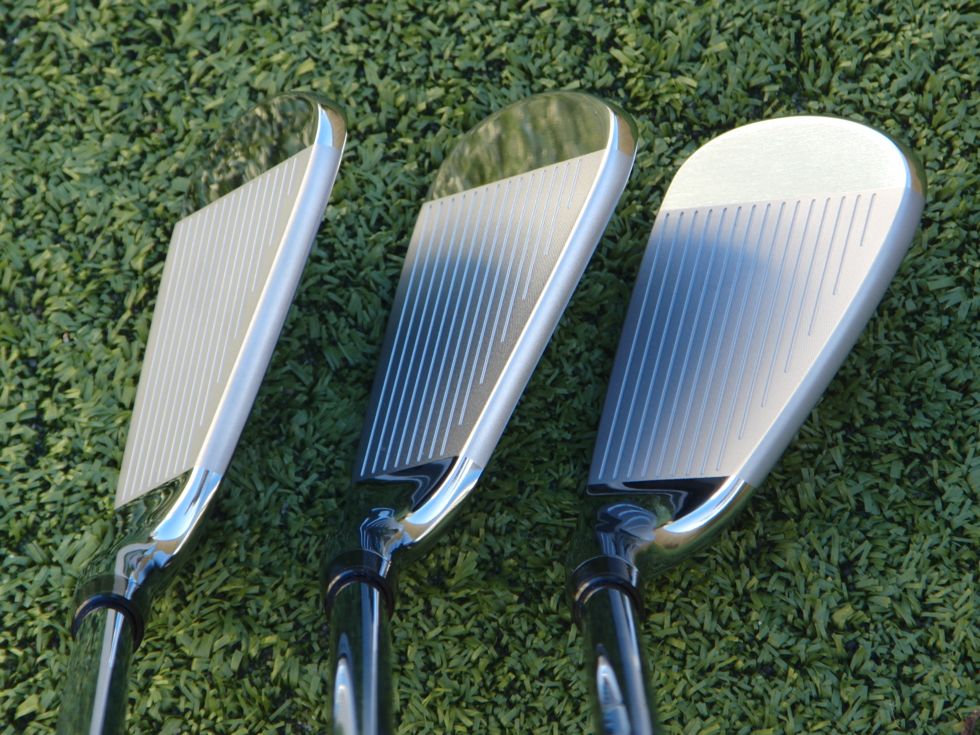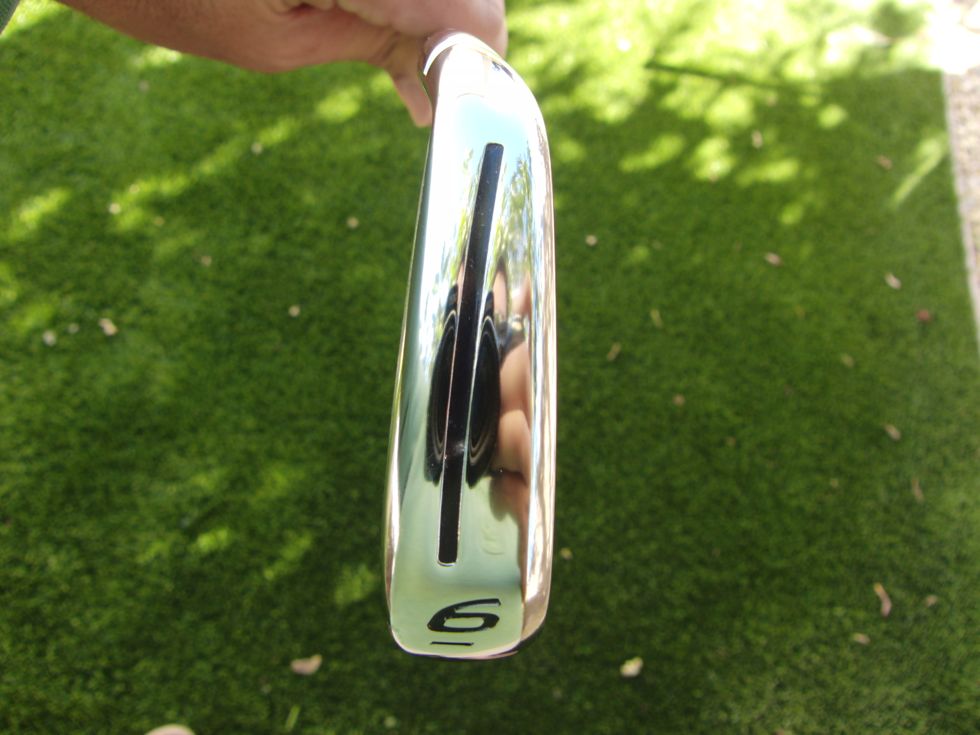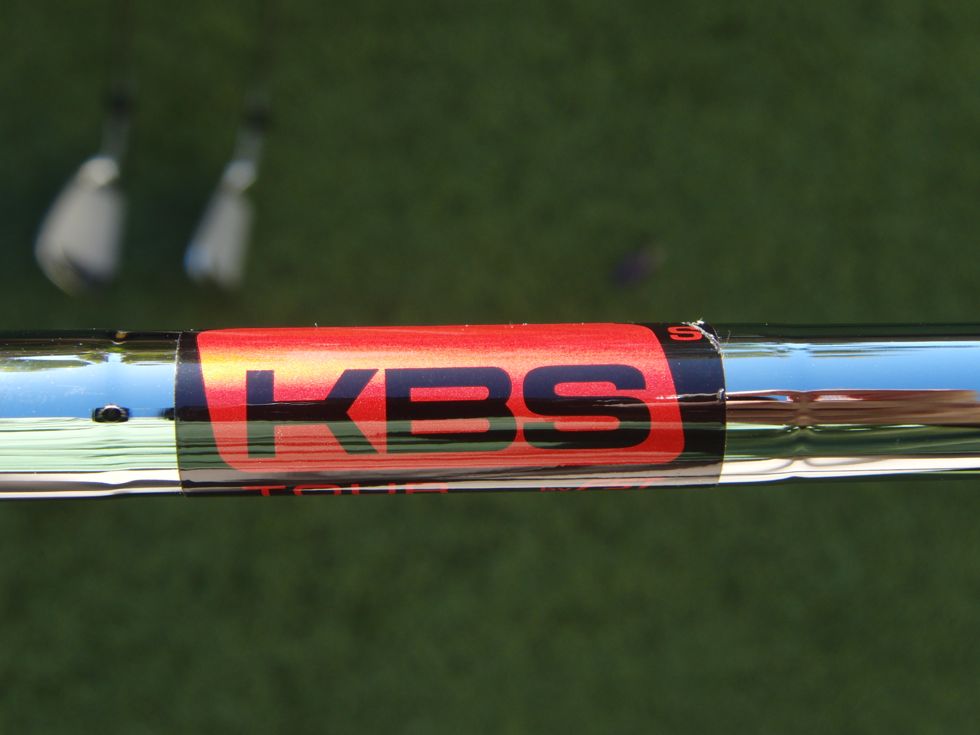
Last year, with the release of the RocketBallz line of woods, TaylorMade unleashed a massive marketing blitz unusual for the golf market. While their irons have long been solid, TaylorMade still hasn’t cemented themselves as the same dominating force from the short grass as they are off the tee.
Enter RocketBladez. TM’s newest line of irons were leaked back in October, and they claim to have brought the same (or similar) Speed Pocket technology from the woods. The Tour model that I have been testing is, of course, aimed at the better players, with thinner soles and toplines, minimal offset, and a straighter leading edge.
Ever since I played my first set of wide-soled super-game-improvement irons, I’ve been of the opinion that most people can get away with (or even benefit from) playing irons slightly better than their skill level. That was the main take-away when I reviewed the Adams CB3 Black irons last year, and that’s what I’ve come to believe here again. Read on to find out why.
Design and Technology
If you want to track the lineage of TaylorMade’s better-player irons, it’s useful to go all the way back to the r7 TP. The r7s introduced the Inverted Cone Technology which, though now invisible, is still retained in the RocketBladez Tour irons.
The technology innovations from the R9 irons has been thrown away, or at least the name has been, but it’s not hard to see the evolution. The Velocity Control Chamber behind the clubface found in the R9 irons was filled with foam, and allowed TaylorMade to increased the CoR. It’s essentially the same idea as the Speed Pocket found in the RocketBladez, albeit attacked from a different angle.
The Speed Pocket is, of course, the flagship technology for these irons. It consists of a 3M-made polyurethane plastic injected into a slit cut out of the 3-iron through 7-iron. Akin to the hollow Speed Pocket found in TM’s RocketBallz woods, the iron version is meant to provide the same performance benefits. It allows the face to flex more than usual, bumping up CoR and increasing ball speed.
Because the polymer is softer than the steel it is replacing, TaylorMade says that the RocketBladez irons provide increased vibration dampening. The polyurethane is also lighter than steel, so it presented an interesting challenge to TM’s engineers. Because it does not extend to the extreme heel and toe of the club, the Speed Pocket instantly improves the moment of inertia of the clubheads. Unfortunately, because it does not extend all the way to the top of the clubhead, TaylorMade had to get creative with weight placement to ensure as low a CoG as possible. TM accomplished this in four ways: a shorter hosel, a thinner topline, a thinner top of the clubface, and a more shallow clubface. This allowed TM to move the CoG even lower than before, despite the Speed Pocket’s drawbacks.
Lastly, TaylorMade purports that the RocketBladez has a Tour-inspired shape as well as a Tour sole, with a more aggressive leading edge and a slight camber in the middle of the sole.
Esthetics
I can boil the “Esthetics” section of this review down to four words: They look like TaylorMades. Mizuno would never make irons that look like this. Miura, Scratch, and Fourteen would never make these irons. Titleist and Ping would have to think long and hard before bringing these to market (and if they decided to, they would keep making them for years while refining them every so often, à la the AP2s). But TaylorMade, well, these are right up their ally.
That said, TM has managed to clean the visible parts of the RocketBladez for the better-player audience. The majority of the clubhead is a satin-grey color, while the cavity is made of a darker grey. The TaylorMade logo resides at the top of the cavity, while the words “RBladez” and “Tour” lie on the bottom. Yellow and two more shades of grey (sensing a trend yet?) are used as accents.
The soles of the irons are simple, though slightly thicker than I expected. Those that include the Speed Pocket look like a “beached” Scotty Cameron putter, or a Nike Method. The polyurethane is not flush with the bottom of the pocket, presumably to prevent wear should the irons ever come in contact with something a bit harder than dirt. (To that end, it remains to be seen the effects that long-term use will have on the visible polyurethane.) The iron number is written is a large script that looks slightly whimsical.
From address, the one thing you do notice about these irons is that the topline is slightly thick for something with “Tour” in the title. I’m not completely averse to a blade with a bit of heft, but these were a little too much for my taste, especially for the market that TaylorMade seems to be going after with them. It also stands to reason that they could have lowered the CoG just a little bit more by shaving some of the topline’s material away.
Performance
The very first thing I noticed when I started playing the RocketBladez Tour irons is the feeling of the ball exploding off the face. And not even just on center-struck shots, either. Every swing felt like I was firing a cannon off my clubface, much more like a driver than an iron. These clubs are the epitome of “spring-like effect,” even with the short sticks, which do not have the Speed Pocket. The best way that I have come up with is that it almost felt like I was double-hitting the ball; like I made contact … wait for it … and then the ball left the clubface. It’s an interesting sensation, but one I quite enjoyed.
The feel was different that what I’m used to, even with the softest of soft forged carbon steel irons I’ve hit in the past. It was much less like hitting a piece of hard rubber, and more like hitting a racquetball.
If I have to be a bit critical of one aspect of the RocketBladez Tour irons, it’s that the distance of the clubs don’t quite live up to the hype. They did launch a touch higher than my Nikes, sure, but the added distance was nothing spectacular. The entire reason that modern irons are designed with super low CoGs is so that the manufacturers can lower the loft, giving you a bit more distance with the same launch angle. The RocketBladez Tour irons have relatively normal lofts though, so while they did launch higher, the distance wasn’t overwhelming.
That high launch might not be great in the wind, but it did prove nice at getting the ball to stop on the greens. The face has a swirl-milled finish that may or may not contribute to the overall spin, but either way I had no trouble getting well-struck shots to back up with my short irons, and check up nicely with the long clubs, even out of the rough. The cause-and-effect game is not really worth getting into with spin, but suffice it to say that the check-up was more than adequate.
Speaking of the rough, the RocketBladez Tour irons have slightly wider soles than most irons in the players irons category, and if there’s one area of the game that that helps, it’s out of the rough. That added heft made the clubheads much less likely to be twisted by the thick, wet grass that I’ve encountered early in the season.
Specs
The TaylorMade RocketBladez Tour irons come stock with the increasingly popular KBS Tour shaft, which are some of my favorites on the market. Available for righties as well as lefties, the RocketBladez Tours come in regular, stiff, and x-stiff, with opportunities for custom options. The stock grip is a slightly modified Golf Price Tour Velvet, not my favorite grip but a safe choice nonetheless.
RocketBladez Tour irons come stock in 3-PW, with a 51.5˚ AW available. The 3 iron is 19˚, leaving room for a 15˚ fairway and a 17˚, my preferred setup, though your milage may vary. The PW is 47˚, high enough that you probably shouldn’t have to buy the AW to bridge the gap to your SW.
Stock on the RocketBladez Tour irons are a set of KBS Tour shafts, which have quickly become some of my favorite shafts on the market. I prefer the feel and flex characteristics of the KBS Tours to True Temper’s offerings, though Project X shafts remain my favorite. I also like the weight, especially compared to the KBS Tour 90 shafts that came stock with the Adams CB3 irons from last year. The KBS Tours match well with the size of the clubheads.
Club Loft Lie Length Offset Bounce Swing Weight ---- ---- --- ------ ------ ------ ------------ 3I 19˚ 60.5˚ 38.75" 3.5mm 0.0˚ D2 4I 22˚ 61.0˚ 38.25" 3.2mm 1.0˚ D2 5I 25.25˚ 61.5˚ 37.75" 2.9mm 1.5˚ D2 6I 29.5˚ 62.0˚ 37.25" 2.6mm 3.5˚ D2 7I 33.75˚ 62.5˚ 36.75" 2.3mm 4.0˚ D2 8I 38˚ 63.0˚ 36.25" 2.0mm 6.5˚ D2 9I 42˚ 63.5˚ 35.75" 1.7mm 7.5˚ D2 PW 47˚ 64.0˚ 35.50" 1.5mm 9.0˚ D3 AW 51.5˚ 64.0˚ 35.50" 1.4mm 9.0˚ D3
Conclusion
Maybe it’s just the clubs that I’ve had the opportunity to review, but I seem to come to this conclusion a lot: just about anyone can hit theses clubs. I play to a low single-digits handicap, and while there are some things I might change, I very much enjoy TaylorMade’s newest offerings.
Remember Nike’s old Slingshot irons, or Callaway’s Fusion Wide Sole irons? Both of those clubs were made for the highest of high handicappers, and I used to know a few people who gamed them. Those irons weren’t great to hit from hairy lies, or even tight lies, but boy oh boy was the feeling of a purely-struck shot off a tee with one of those delightful. That much power should be outlawed.
With the RocketBladez Tour irons, it seems like TaylorMade has brought that feeling to the better-player category. Even with that great performance, I can say with certitude that these irons can be played from just about any lie. Workability-wise, I can do anything with these irons that I could do with any set of irons. They launch high. They land soft.
I’m not exactly sure who these irons aren’t for. I could see myself playing these at any point of my golfing life, and I assure you I used to be properly awful. No matter your skill level, if you’re in the market for a set of irons, you would be doing yourself a disservice to overlook these irons.







What is the difference between the rocketbladez, HL model, and HP model?